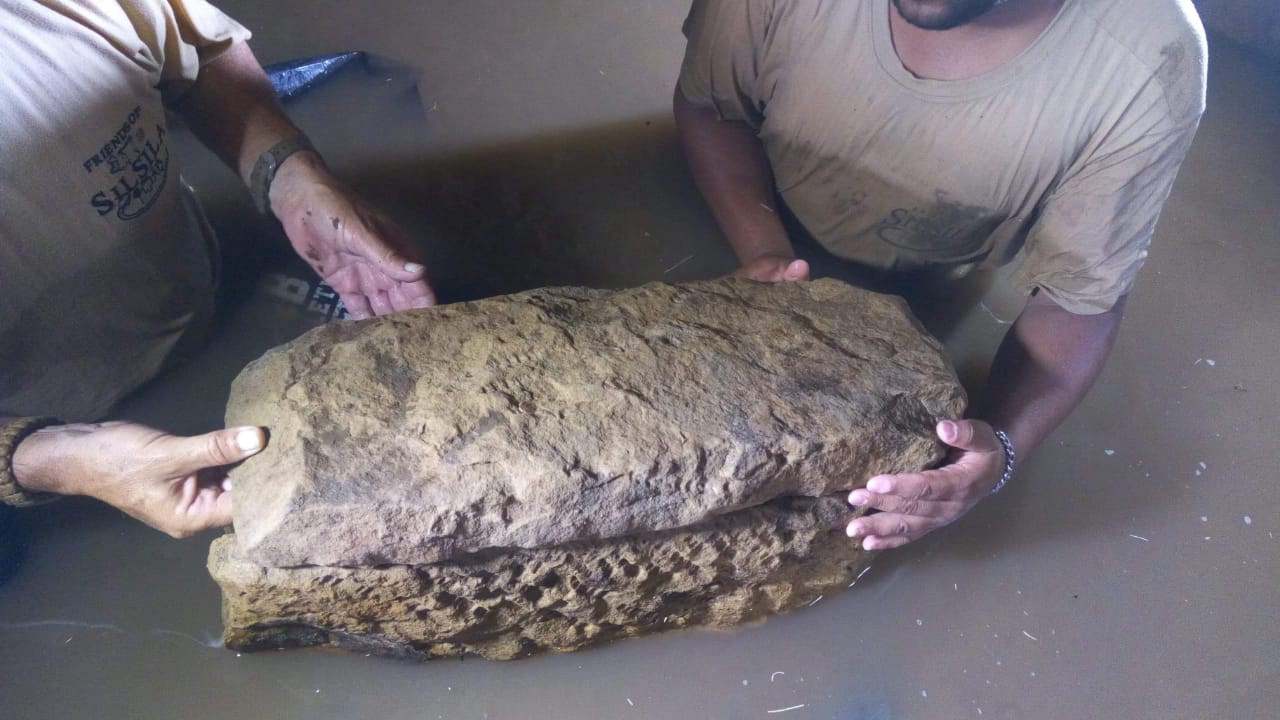Archaeologists Sift Through Soup of Human Remains in Waterlogged Mass Grave in Egypt
A desert tomb became a watery grave for some 50 to 60 ancient Egyptians at the ancient Nile quarry site of Gebel el-Silsila, in Upper Egypt.
Archaeologists announced the discovery of the mass grave Dec. 13. They discovered the tomb almost two years ago, but the excavation has been painstaking. The two chambers are filled with briny water from a naturally occurring spring, and the remains inside are jumbled. To excavate the tomb, archaeologists must run pumps to remove enough water so they can sit and gently hand-sift the mud for bones and artifacts.
"We're actually sitting in this soup, so to speak, of human remains," said John Ward, the assistant mission director of the Gebel El-Silsila survey project, which is headed by his wife, Maria Nilsson. "You can't see in the water at all, so everything is done by touch." [See Photos of Artifacts from the Watery Grave]
Unusual tomb
Gebel el-Silsila sits at a narrow part of the Nile some 40 miles (65 kilometers) north of Aswan. It was a major quarry site dating back to the 18th Dynasty of Egypt, about 3,550 years ago.
The newly discovered tomb dates back to that era, Ward told Live Science. It sits at the bottom of a 16.5-foot-deep (5 meters) shaft hewn out of the bedrock. The tomb is made up of two chambers, but archaeologists haven't been able to access the second chamber yet because it's filled with debris and silt.
In the main chamber alone, though, researchers have found three sarcophagi. One contained the remains of a child; the other an infant. The third is also infant-sized, but has not yet been fully studied, Ward said. [Photos: Children's Graves Discovered in Ancient Egypt]
Around these sarcophagi were the bones of at least 50 other people, about two-thirds adults and one-third children. The remains are jumbled, Ward said, because of the water flowing into the tomb and because of a failed attempt at looting, which, at some point, disturbed the silt and water.
Get the world’s most fascinating discoveries delivered straight to your inbox.
Mystery grave
All of the other tombs at Gebel el-Silsila have been looted, so discovering one with all its contents inside is "like Christmas every day," Ward said — if Christmas involved sitting in a humid underground chamber sloshing around murky, bone-filled water, anyway. The effect of excavating under such conditions is otherworldly, Ward said. "It's humbling."
An examination of the bones in the tomb revealed that many of the adult males show signs of broken bones and back problems, indicating that they were likely quarry laborers. The women and children inside may have been family members: One clear discovery from the Gebel el-Silsila project is that the quarry was the site of a thriving community, not just a man camp populated by workers.
The newfound tomb also indicates that these workers weren't slaves. The bodies were found with amulets, including shabtis — small figurines buried with the dead to act as their own manual laborers in the afterlife. Slaves wouldn't have been buried with shabtis, Ward said.
The researchers are now analyzing the third sarcophagus and continuing to sift through the silty tomb. With time, they plan to excavate the second room as well.
"We're trying to figure out why so many people were buried in one place," Ward said.
- Photos: More than 40 Tombs Discovered in Upper Egypt
- Photos: 3,400-Year-Old Tomb Along Nile River
- The 25 Most Mysterious Archaeological Finds on Earth
Originally published on Live Science.

Stephanie Pappas is a contributing writer for Live Science, covering topics ranging from geoscience to archaeology to the human brain and behavior. She was previously a senior writer for Live Science but is now a freelancer based in Denver, Colorado, and regularly contributes to Scientific American and The Monitor, the monthly magazine of the American Psychological Association. Stephanie received a bachelor's degree in psychology from the University of South Carolina and a graduate certificate in science communication from the University of California, Santa Cruz.



